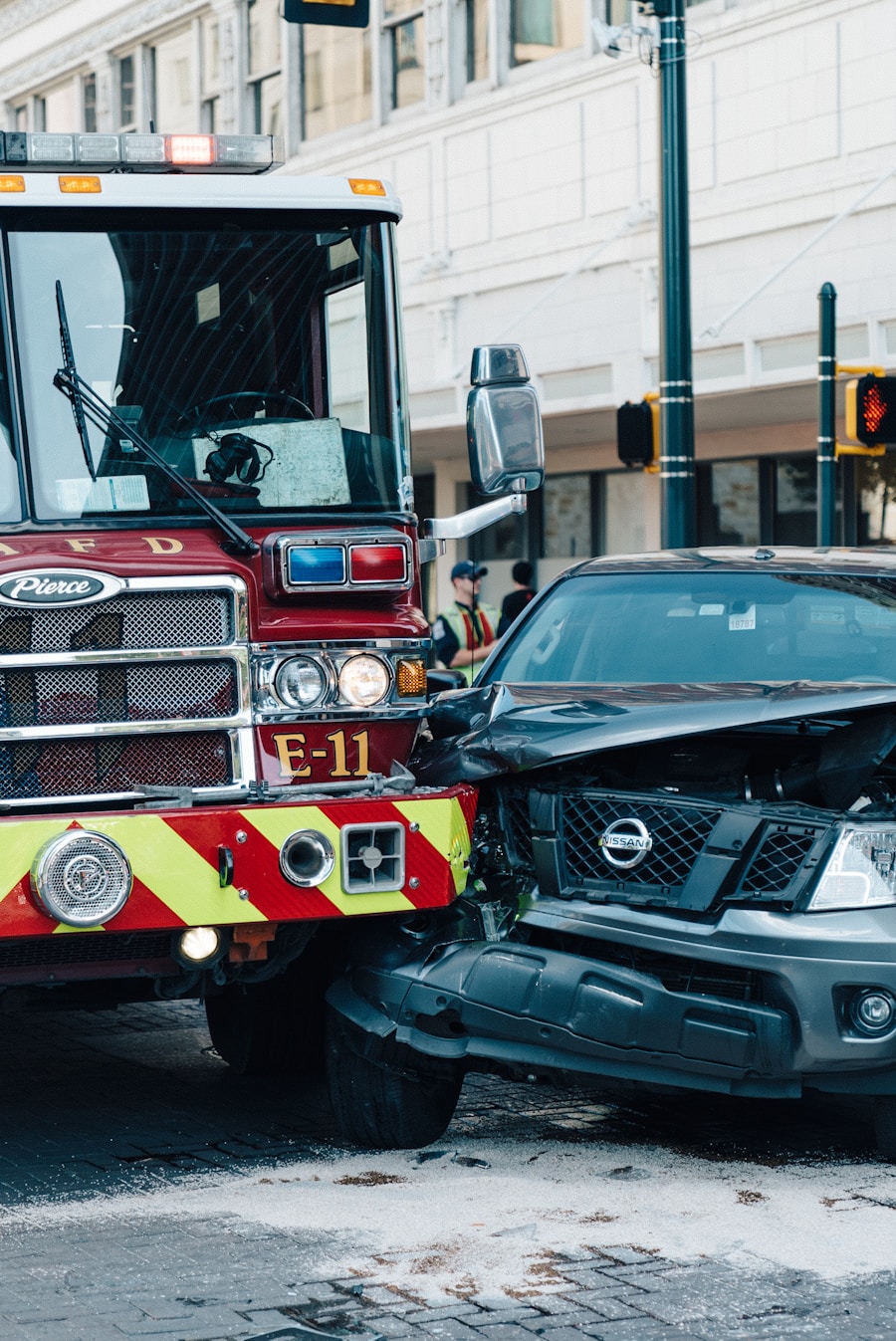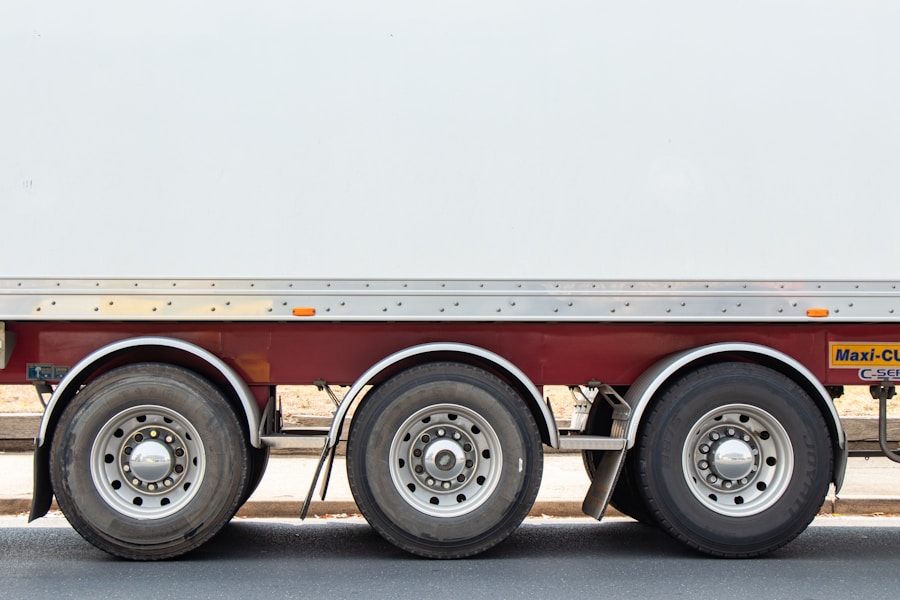In the aftermath of an accident, the immediate response is crucial for ensuring the safety of all involved parties. The first step is to assess the situation and check for injuries. If anyone is hurt, it is essential to call emergency services right away.
This not only ensures that medical professionals can provide necessary care but also helps to secure the scene for further investigation.
However, caution must be exercised; if a vehicle is inoperable or if there are injuries, it is often best to leave everything as is until authorities arrive.
Once emergency services are on the scene, they will take over the management of the situation. This includes directing traffic, providing medical assistance, and documenting the incident. It is important for individuals involved in the accident to remain calm and cooperative.
Providing accurate information to law enforcement can aid in the investigation process. Additionally, taking photographs of the scene, vehicle damage, and any visible injuries can be invaluable later on. These images serve as a visual record that can support claims and legal proceedings.
Key Takeaways
- Stay calm and ensure immediate safety measures are taken after an accident, such as moving to a safe location and calling emergency services.
- Collect and preserve evidence from the accident scene, including photographs, witness statements, and police reports, to support the investigation and insurance claims.
- Promptly file insurance claims and seek legal assistance if necessary to ensure fair compensation for damages and injuries sustained in the accident.
- Seek medical treatment and rehabilitation for any injuries sustained in the accident, and follow through with the prescribed treatment plan for full recovery.
- Arrange for vehicle repair or replacement as needed, and consider the financial impact of the accident on future transportation needs.
Investigation and Evidence Collection
Following an accident, a thorough investigation is essential to determine the cause and liability. Law enforcement typically conducts an initial investigation, which includes gathering statements from those involved, witnesses, and any available surveillance footage. The police report generated from this investigation serves as a critical document for insurance claims and potential legal actions.
It is important for individuals involved in the accident to obtain a copy of this report as soon as it becomes available. In addition to the police report, evidence collection plays a vital role in establishing the facts surrounding the incident. This may involve gathering physical evidence from the scene, such as skid marks, debris, or vehicle parts.
Witness statements can also provide context and corroborate accounts of what transpired. In some cases, accident reconstruction experts may be called upon to analyze the evidence and provide insights into how the accident occurred. Their expertise can be particularly useful in complex cases where liability is disputed.
Insurance Claims and Legal Proceedings

Navigating insurance claims after an accident can be a daunting task. Each party involved typically files a claim with their respective insurance companies, which will then investigate the incident based on the evidence collected. It is crucial for individuals to understand their policy coverage and limits, as well as any deductibles that may apply.
Insurance adjusters will assess damages and determine compensation based on factors such as medical expenses, vehicle repairs, and lost wages. If disputes arise regarding liability or compensation amounts, legal proceedings may become necessary. Engaging an attorney who specializes in personal injury or auto accidents can provide valuable guidance through this process.
An attorney can help negotiate with insurance companies and represent clients in court if needed. It is important to keep detailed records of all communications with insurance representatives and any medical treatment received, as this documentation will support claims and legal arguments.
Medical Treatment and Rehabilitation
| Category | Metrics |
|---|---|
| Medical Treatment | Number of patients treated |
| Medical Treatment | Average length of hospital stay |
| Rehabilitation | Number of rehabilitation sessions |
| Rehabilitation | Percentage of patients completing rehabilitation program |
Medical treatment following an accident is paramount for recovery, regardless of whether injuries are immediately apparent. Some injuries may not manifest symptoms until days or weeks later, making it essential for individuals to seek medical attention promptly.
Rehabilitation often follows initial medical treatment, especially for more severe injuries. Physical therapy may be necessary to regain strength and mobility, while psychological counseling can address emotional trauma resulting from the accident. The rehabilitation process can be lengthy and may require ongoing medical appointments, therapy sessions, and possibly even surgical interventions.
Understanding the full scope of medical needs is critical for both recovery and for accurately assessing potential compensation in insurance claims.
Vehicle Repair and Replacement
The condition of vehicles involved in an accident can vary widely, from minor cosmetic damage to total loss. Assessing the extent of damage is essential for determining whether repair or replacement is necessary. Insurance companies typically send adjusters to evaluate the vehicle’s condition and estimate repair costs.
If repairs are feasible, obtaining multiple quotes from reputable auto repair shops can ensure that the work is done correctly and at a fair price. In cases where a vehicle is deemed a total loss, individuals must navigate the process of replacement. Insurance policies often include provisions for total loss settlements, which typically involve compensation based on the vehicle’s market value prior to the accident.
This can sometimes lead to disputes over valuation; therefore, having documentation such as purchase receipts, maintenance records, and photographs can support claims for fair compensation.
Financial and Economic Impact

The financial implications of an accident extend beyond immediate medical bills and vehicle repairs. Lost wages due to time off work can significantly impact an individual’s financial stability, especially if recovery takes longer than anticipated. Additionally, ongoing medical expenses related to rehabilitation or long-term care can create a substantial financial burden.
Understanding these potential costs is essential for individuals when negotiating with insurance companies or pursuing legal action. The broader economic impact of accidents can also be significant. For instance, if multiple vehicles are involved in a collision on a busy roadway, traffic disruptions can lead to delays that affect local businesses and commuters alike.
Furthermore, increased insurance premiums following an accident can have long-term financial repercussions for all parties involved. These factors highlight the importance of comprehensive planning and support systems for those affected by accidents.
Emotional and Psychological Support
The emotional toll of an accident can be profound and long-lasting. Survivors may experience feelings of anxiety, depression, or post-traumatic stress disorder (PTSD) as they grapple with the aftermath of their experience. It is essential for individuals to recognize these feelings and seek appropriate support.
Counseling or therapy can provide a safe space to process emotions and develop coping strategies. Support groups can also be beneficial for those who have experienced similar situations. Sharing experiences with others who understand the challenges can foster a sense of community and reduce feelings of isolation.
Family members and friends play a crucial role in providing emotional support during recovery; open communication about feelings and needs can strengthen these relationships during difficult times.
Prevention and Safety Measures for Future Accidents
Preventing future accidents requires a multifaceted approach that encompasses education, technology, and community involvement. Public awareness campaigns aimed at promoting safe driving practices—such as obeying speed limits, avoiding distractions like mobile phones, and driving under the influence—can significantly reduce accident rates. Schools often incorporate driver education programs that emphasize safe driving habits from an early age.
Technological advancements also play a critical role in enhancing road safety. Features such as automatic emergency braking, lane departure warnings, and adaptive cruise control are becoming standard in many new vehicles, helping drivers avoid potential collisions. Additionally, community initiatives that focus on improving road infrastructure—such as better signage, improved lighting at intersections, and pedestrian-friendly designs—can contribute to safer driving environments.
By addressing both individual behaviors and systemic issues within transportation networks, society can work towards reducing the frequency and severity of accidents on our roads.
If your commercial vehicle is involved in an accident, it is important to understand the financial implications and potential consequences. One related article that provides valuable information on this topic can be found at Fair Shot Financial. This article discusses the steps you should take after a commercial vehicle accident, including contacting your insurance company, documenting the scene, and seeking legal advice if necessary. By following the advice in this article, you can protect yourself and your business from the financial fallout of a commercial vehicle accident.
FAQs
What should I do if my commercial vehicle is involved in an accident?
If your commercial vehicle is involved in an accident, the first step is to ensure the safety of everyone involved. Then, you should call emergency services and report the accident to the police. It’s also important to exchange information with the other parties involved and gather evidence such as photos and witness statements.
What are the potential consequences of a commercial vehicle accident?
The consequences of a commercial vehicle accident can include property damage, injuries or fatalities, legal liabilities, increased insurance premiums, and damage to the reputation of the company.
What are the legal obligations for commercial vehicle drivers involved in an accident?
Commercial vehicle drivers are legally required to stop at the scene of an accident, render aid to anyone who is injured, and exchange information with the other parties involved. They may also be required to report the accident to the authorities and their employer.
How can I protect my company in the event of a commercial vehicle accident?
To protect your company in the event of a commercial vehicle accident, it’s important to have comprehensive insurance coverage, maintain regular vehicle maintenance and safety checks, provide proper training for drivers, and have clear policies and procedures in place for handling accidents.
What are the potential financial implications of a commercial vehicle accident?
The financial implications of a commercial vehicle accident can include repair or replacement costs for the vehicle, medical expenses for injuries, legal fees, settlements or judgments, and potential loss of business or revenue.


